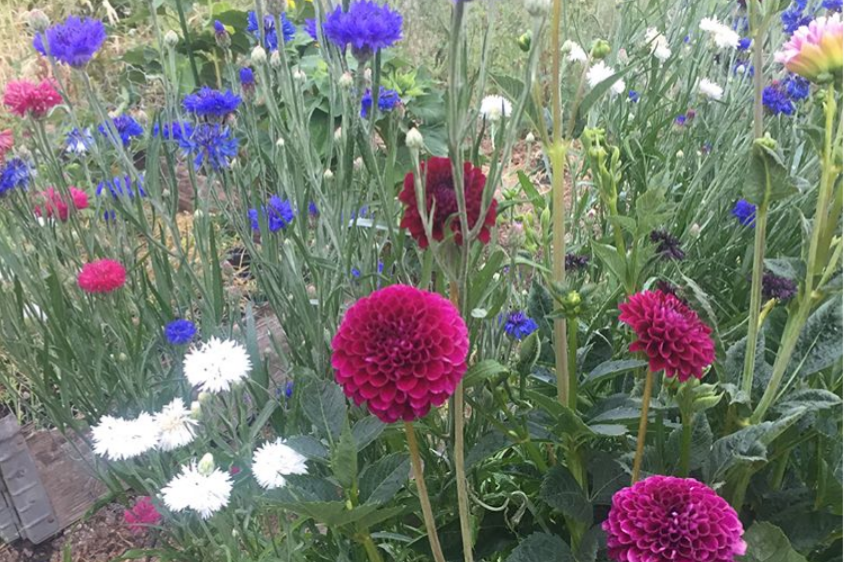#ThisWeekinPR: let a thousand flowers bloom

About the author
Richard Bailey Hon FCIPR is editor of PR Academy's PR Place Insights. He teaches and assesses undergraduate, postgraduate and professional students.

Let’s agree that public relations is interesting. Important even; and colourful too.
It’s also varied: commercial consultants may have few shared professional interests with in-house practitioners in the public sector.
As an educator, it’s not my job to put people off certain sectors and direct them towards my favourites. It’s important to keep an open mind and to foster a culture of curiosity. (I have never worked in a comms role for the NHS, but recall encouraging one student to look beyond agency/consultancy roles, thinking how good they’d be in-house. After a short spell in the private sector, this graduate has since forged a very successful career in the NHS and was a contributing author to #FuturePRoof edition three this year.)
This is my starting point for our #ThisWeekinPR selection. I’m looking for examples of interesting, important work demonstrating different perspectives. I’m less interested in the narrative you will read on other sites that focuses on events, launches, campaigns and celebrity. I tend to frown on self-conscious ‘PR girl’ content.
It’s also a given that contributions should be well written, since writing abillty is one of the traits shared by practitioners.
I’ve been asked – challenged even – about the principles behind the weekly selection, so thought I’d outline them here along with a plea for a robot to take on the fairly onerous task.
- How do I find and select articles?
- How could be process be streamlined and automated?
Age of content
Ten years ago I’d have been looking exclusively for blog posts, and would have subscribed to many more in my news reader.
Now content can be blog posts, podcasts, videos, LinkedIn posts, magazine articles, Instagram photos, even tweets. If it’s fresh, if it’s interesting, and if I can find it, I hope to include it. Which brings me to the second point.
Art of curation
There’s so much content out there, that it seems helpful to highlight the work of others rather than adding to the information overload.
#ThisWeekinPR is my attempt to curate quality content from a UK public relations perspective. But why UK only?
Act of community building
The latest PRCA Census suggested 83,000 people work in UK public relations. At Bled last week, Toni Muzi Falconi and Frank Ovaitt suggested there are up to six million professionals globally.
Now, 83,000 is a lot of faces in a very large football crowd. More than I can ever meet and know. But if you imagine having a season ticket, you would quickly get to know many of your fellow superfans. Many people in public relations are connectors, so it doesn’t take many degrees of separation and we’re all connected.
But up to six million seems an impossible task. How can I possibly know who’s who and identify what’s important given the different cultures, political contexts and news agendas? So our focus is primarily on the UK.
#ThisWeekinPR is an attempt to build a community around this young site (as the annual #bestPRblogs contest energised the Behind the Spin PR student community). I also draw on my community and your connections in curating content. I may be vacillating on including a particular piece, but if several of you are recommending it (through likes, shares, comments and retweets) then this will likely sway me to include it.
That’s also one of the best ways to refresh the content and to overcome the bias inherent in my interests, my network and my selections.
Is bias bad?
It sounds appealing to exclude bias, to treat each piece on its merits and to ignore the author. But some individuals have earned the right to express an opinion through their positions of authority (through prominence at work, through their roles with professional associations, and through their activity as eg prize judges). Is it bad to be biased in favour of quality?
If we generated unbiased content based on an algorithm, we’d merely be listing the results of a Google alert.
I receive these just in case, but often find the articles originated with self-serving press releases. I’ve learnt that press releases rarely contain news – but news is more likely to appear in a tweet.
I estimate each Friday round-up takes about two hours a day for five days each week to produce (though some weeks I have to cut it much shorter because I’m travelling or teaching). That’s time-consuming and inefficient (every week I miss lots of high quality content). Surely a robot could save time and money and be more effective than me?
The algorithms are not that straightforward, and you always want to allow space for serendipity. Searches are hard if you don’t know what you’re looking for. Is it public relations? Or communication / communications? Where does the subject begin and end?
I try not to set rigid rules (‘because rules are there to be broken’), but some of my working guidelines follow:
- No more than one entry per person, per week
- No more than six entries per category
- No more than one entry on each topic (eg conference report)
- A mix of short and long-form writing, of words, audio and video
- I try to raise the bar for those who appear frequently. Unless their content is consistently fresh and insightful, I’ll give the nod to a piece from a newcomer.
I’m well aware that I’ve broken all of these guidelines (that’s why they’re not rules). But I think there’s value in restating my starting position.
Public relations is interesting: let a thousand flowers bloom!